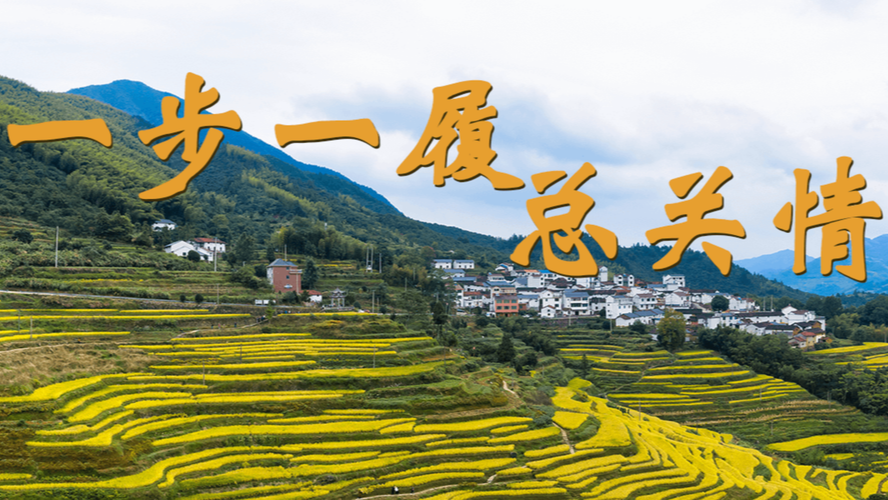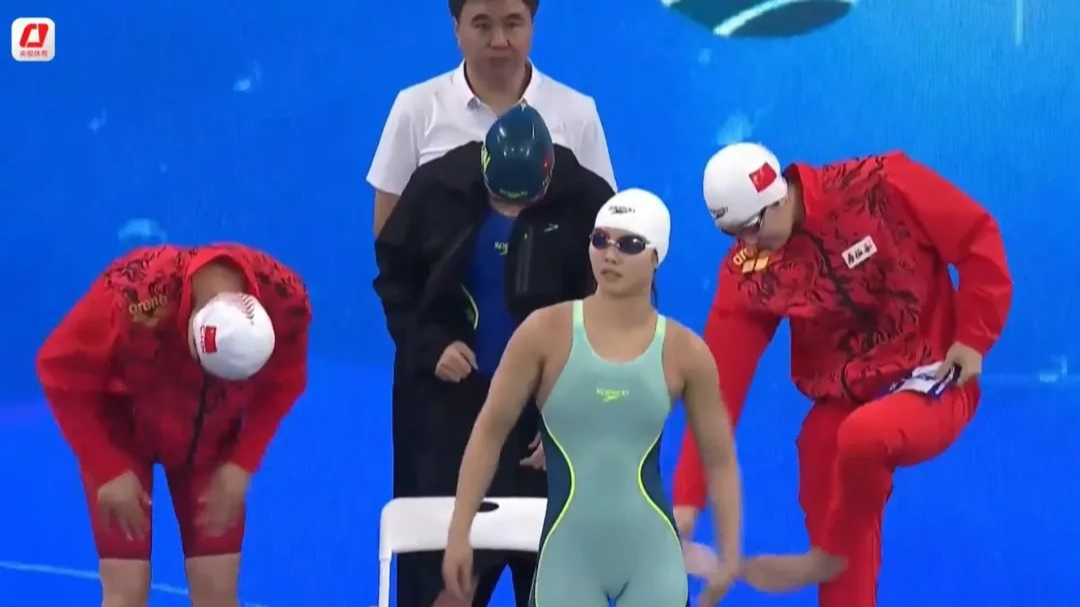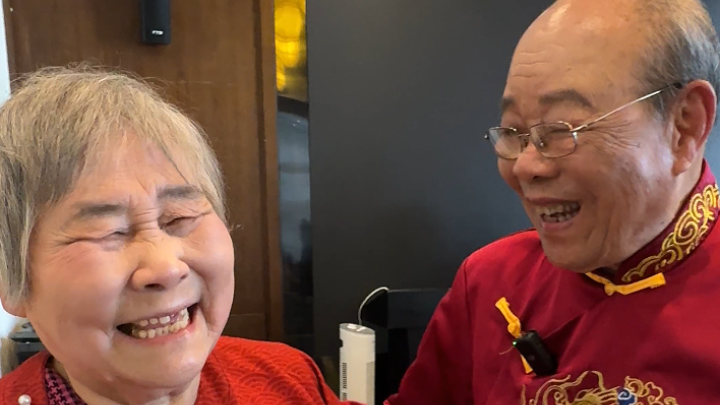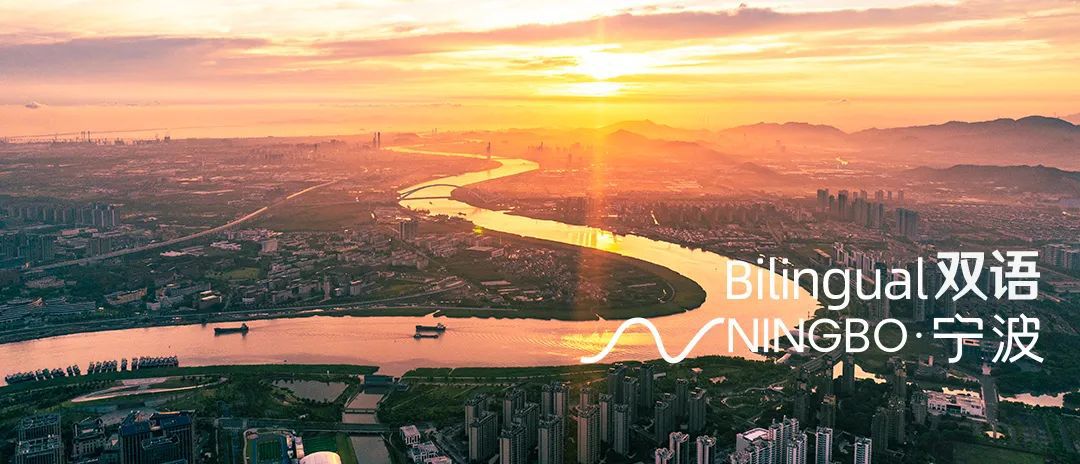
书藏古今,港通天下。宁波是一座向海而生,因港而兴的城市。为了向世界讲好宁波故事,宁波发布推出“双语宁波”栏目,将围绕历史、地理、人文、经济等多个方面聚焦“世界的宁波,宁波的世界”。
作为海上丝绸之路的起点城市之一,宁波自古就和世界各地往来密切。就让我们跟着宁波晚报“外国档案里的宁波”栏目,换个视角,看看外国档案里的宁波是什么样子?
首次提出“丝绸之路”的人,如何看宁波?
How Did the Person Who First Coined the Term "Silk Road" View Ningbo?
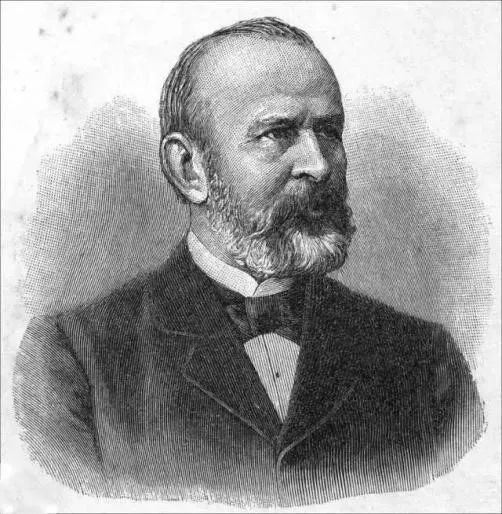
李希霍芬(1833-1905)
Ferdinand von Richthofen (1833- 1905).
李希霍芬,一个在地理和地质学领域如雷贯耳的名字。
In the fields of geography and geology, Ferdinand von Richthofen (1833- 1905) remains a distinguished name.
身为德国著名旅行家,他在1868年至1872年间,先后对中国展开7次考察,足迹遍及当时18个行省中的13个。
Between 1868 and 1872, this renowned German explorer undertook seven expeditions to China,traversing 13 of the country’s 18 provincial districts at that time.
回到德国,他撰写了五卷本巨著《中国——亲身旅行和据此所作研究的成果》。在1877年出版的第一卷中,他首创“丝绸之路”一词,后来被不断引用。
Upon his return to Germany, Richthofen documented his findings in his monumental five-volume work titled China, Ergebnisse eigener Reisen und darauf gegründeter Studien (“China, the Results of My Travels and the Studies Based Thereon”). In the first volume, published in 1877, he coined the term “Seidenstraße” (“Silk Road”). The phrase has ever since been widely quoted to describe the well-traveled trade routes linking China and European countries.

五卷本《中国——亲身旅行和据此所作研究的成果》。
The five-volume work titled China, Ergebnisse eigener Reisen und darauf gegründeter Studien.
李希霍芬一生出版了近200部著作,对中国的研究所达到的深度和广度前无古人。宁波人、也是近代中国地质学创始人翁文灏称他是“最先明了中国地文之伟大科学家”。
Among his extensive body of work, comprising nearly 200 publications, Richthofen conducted research on China with unprecedented depth and breadth. It’s no wonder he was hailed by Weng Wenhao (1889-1971), a Ningbo-native pioneer of modern geology in China, as “a trailblazer scientist to elucidate China’s geological features”.
1868年11月和1871年6月,李希霍芬两次来到宁波。他对宁波的观察,完整记录在1907年由其学生整理出版的《李希霍芬中国旅行日记》中。2016年,该书中译本由商务印书馆出版。
Richthofen visited Ningbo twice (in November 1868 and June 1871). His detailed observations on ancient Ningbo were compiled by his student and published as Ferdinand von Richthofen Tagebücher aus China (“Ferdinand von Richthofen's Diaries from China”) in 1907. In 2016, the work was translated into Chinese and published by the Commercial Press.
从书中我们得知,150多年前,这位德国学者在宁波城、东钱湖、鄞江桥、雪窦山等地都曾留下足迹。他眼中的宁波富有而安逸,拥有“古老而和谐的文化遗产”。
This book reveals that over 150 years ago, Richthofen left a footprint in many places across Ningbo, including its city areas, Dongqian Lake, Yinjiang Bridge, and Xuedou Mountain. In his words, Ningbo was a city of prosperity and tranquility, rich in “ancient and harmonious cultural heritage”.
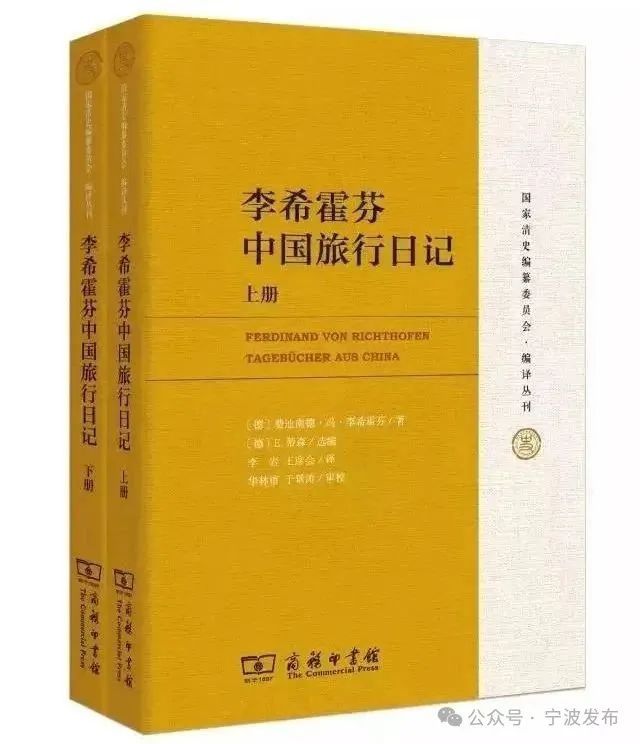
中译本书影。
Photograph of the Chinese translation of the book.
宁波城、东钱湖与鄞江镇
Ningbo City, Dongqian Lake
and Yinjiang Town
李希霍芬首次抵达宁波是在1868年11月13日,至11月19日离开,停留了7天时间。来到宁波之前,李希霍芬已经到访中国上海、天津、北京、山东多地,原计划沿着长江往内陆走,在朋友金斯米尔的建议下取道宁波。
Richthofen’s first visit to Ningbo took place in 1868, lasting seven days from November 13 to 19. Before his arrival in Ningbo, he had traveled extensively throughout China, exploring regions including Shanghai, Tianjin, Beijing, and Shandong Province. His original plan was to journey inland along the Yangtze River, but at the suggestion of his friend Kingsmill, Richthofen decided to take an alternative route that included a stop in Ningbo instead.
11月12日,他从上海启程,次日进入镇海口。“景色非常美丽,经过一些山形岛屿后就到了被山峰环绕的入口。”李希霍芬在日记中写,“这里的山之间是平地,河边有很多庄稼地,也有很多房屋。这里的房子都是用黑色的砖建造的,看起来漂亮又结实,不时地会出现一些庙宇。”很像对招宝山一带的描写。
On November 12, Richthofen departed from Shanghai and arrived at Ningbo’s Zhenhai Estuary the following day. “The scenery was extraordinarily beautiful. After passing through some mountainous islands, we came to an entrance surrounded by peaks,” Richthofen wrote in his diary. He also noted: “The mountains gradually recede, giving way to flatlands in between. Along the river, there are many cultivated fields and numerous houses. The houses, built from black bricks, appeared both elegant and sturdy, with temples occasionally coming into sight.” With his clue-filled description, his observation points to the area near Zhaobao Mountain in Zhenhai.
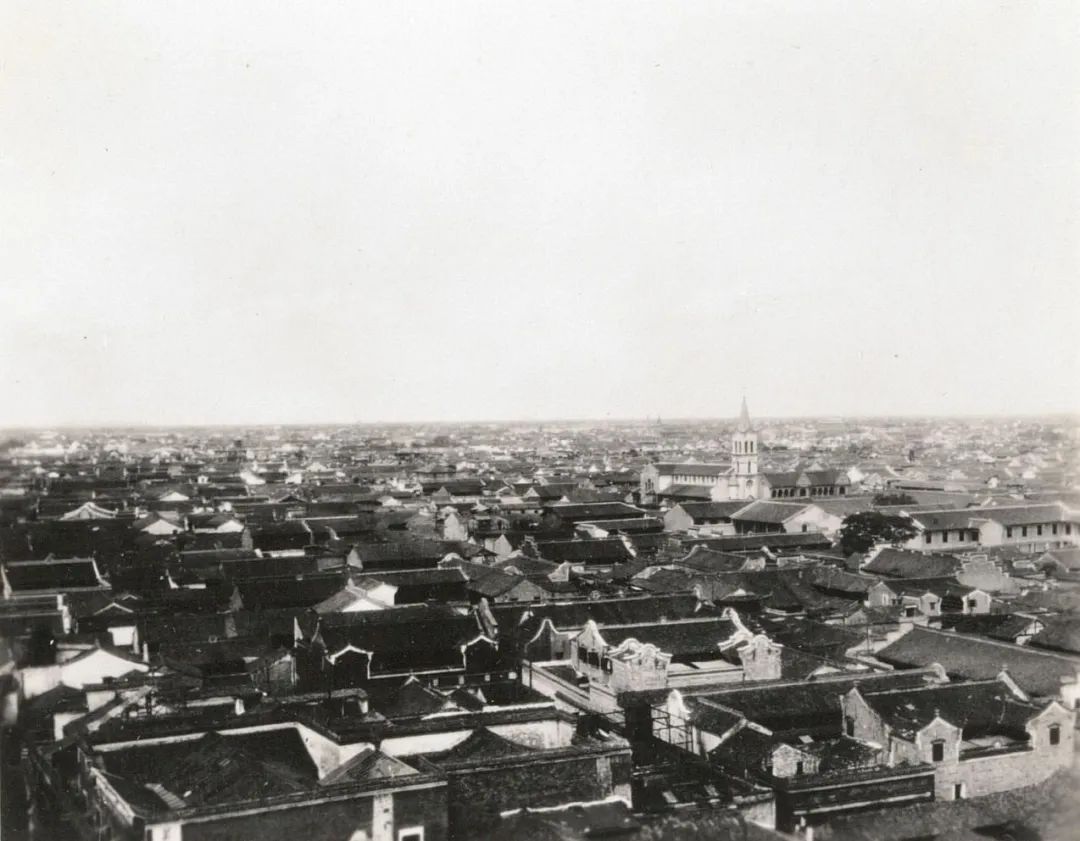
宁波城旧影。
A historical photo of Ningbo City.
当天下午,他在宁波城中散步,形容说“宁波是除广州以外,我见过的最富有最安逸的中国城市了,主要街道上遍布商铺,那些写着金字的招牌看起来像画儿一样”。
During his afternoon walk through the city area, he remarked that it was “the most affluent and tranquil Chinese city I had seen, aside from Guangzhou.” He observed the main streets bustling with shops, with golden-lettered signs resembling artwork.
他注意到了灵桥,“和城里一样热闹的还有周边的地方,尤其是东边,一座千年古桥将这里和对面的河岸连接起来”。
He was impressed by Lingqiao Bridge, describing it as a “thousand-year-old bridge connecting the area to the opposite riverbank, bustling with activity just like the city itself.”
他看到了铸铁场,那里有“像艺术品一样完美的铸造刻字大铁钟的模子”。
He visited an iron foundry, where he marveled at the “artistic molds for casting large iron bells with intricate inscriptions.”
他也逛了福建会馆,“大殿里的石头柱子雕刻精美,应该说是我在中国见过最美的”。
He also roamed the Fujian Guild Hall, noting that “the stone pillars in the main hall were exquisitely carved, possibly the most beautiful I had seen in China.”
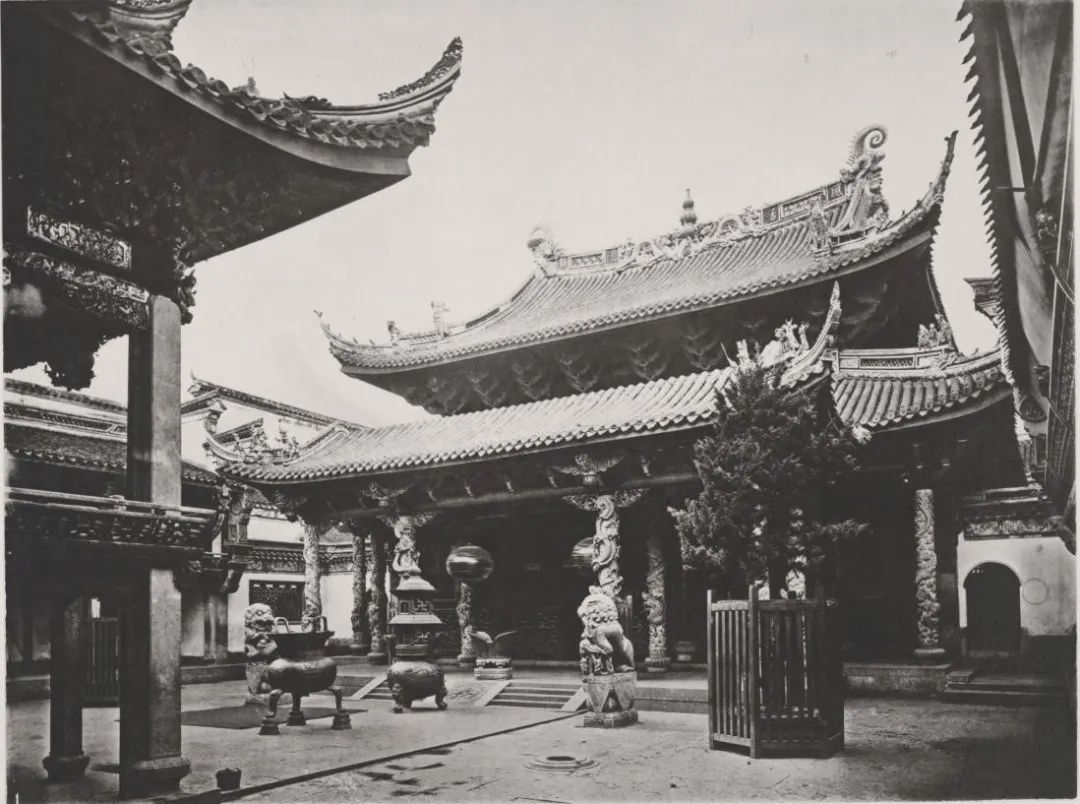
1872年由约翰・汤姆森拍摄的福建会馆。
Fujian Guild Hall, 1872, by John Thomson.
陪伴李希霍芬的,是1844年6月即到达宁波、在这里生活了20多年的美国传教士麦嘉缔,李希霍芬调侃这位朋友,“在当地人里颇有名气”。
Richthofen was accompanied by McCartee, an American missionary who had arrived in Ningbo in June 1844 and had lived there for over 20 years. Playfully, Richthofen referred McCartee to being “quite well-known among the locals.”
他赞美说,“宁波还有一个特点就是有很多庙宇,它们多建在非常浪漫的地方,在别的地方我还从来没见过如此古老而和谐的文化遗产。”
He also praised Ningbo for its numerous temples at romantic spots: “I have never seen such ancient and harmonious cultural heritage anywhere else.”
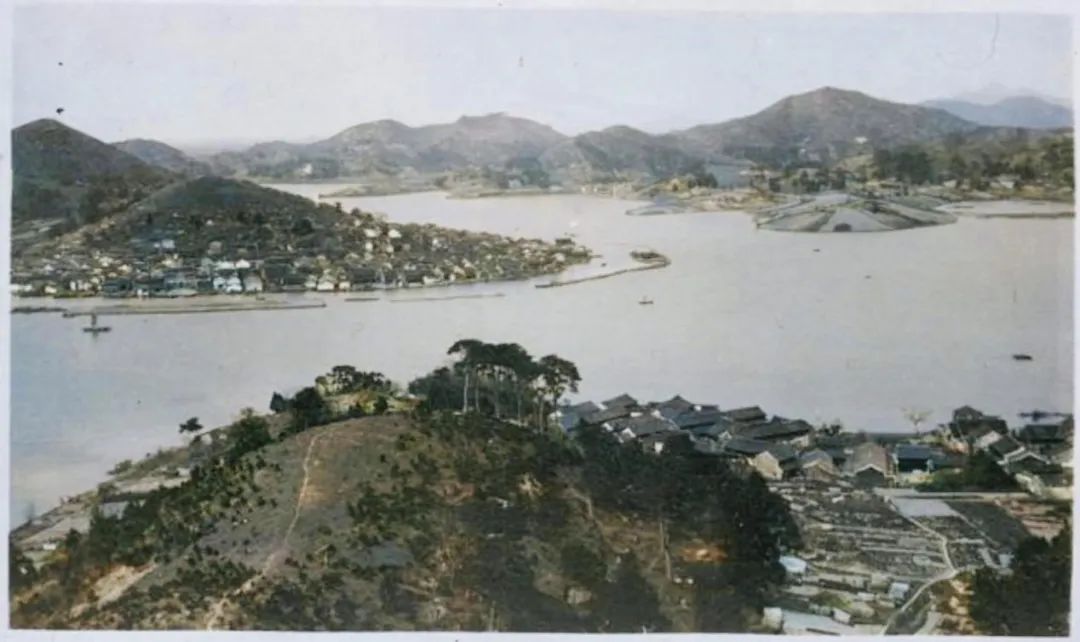
这张老照片展示了东钱湖的部分景致。
The old image showcases partly view of Dongqian Lake.
他还坐船去了东钱湖,在湖面上绕了一个大圈,说湖边“土质肥沃,一片片绿地格外引人注目,人们紧挨着湖居住,村子密密麻麻,间或可见几座庙宇,在草地上吃草的牛儿会偶尔抬头看看”;他也去了鄞江桥,在那里,李希霍芬遇到了他的德国同胞,曾担任华美医院院长的白保罗。当时白保罗已经在鄞江镇住了3年。
Richthofen also took a boat trip around Dongqian Lake, describing the lakeside as having “fertile soil and striking green fields, with densely packed villages abutting the lake. Temples dotted the landscape, and grazing cows beyond would occasionally lift their heads.” He visited Yinjiang Bridge, where he met his fellow German, Stephen Paul Barchet, who had been living in Yinjiang Town for three years and had previously served as the director of the Huamei Hospital (currently as Ningbo No. 2 Hospital).
风光秀美的鄞江镇让李希霍芬心旷神怡。“这里就如同一个花园,除了稻子、蔬菜、红薯以外,到处种着棉花和茶叶。村庄散落在画卷一般的风景里,偶尔可见几座大的建筑和庙宇。”
Richthofen was charmed and refreshed by the picturesque beauty of Yinjiang Town. He metaphorically compared it to a garden, stating that “cotton and tea are planted in addition to rice, vegetables, and sweet potatoes.” He also mentioned, “The village clusters were scattered across the scenic scroll, with sporadically erected buildings and temples.”
作为地质学家,李希霍芬还注意到,这一带的山体都是红色的砂岩。“这不由让人想起图林根森林和一些德国中部地带,比如瓦尔登堡和西里西亚的风景。那里同样有这种漂亮的地貌和绿色的植被,只是没有竹子。”
As a geologist, Richthofen highlighted that the local mountains were composed of red sandstone, which “brought into mind the Thuringian Forest and regions in central Germany, such as Waldenburg and Silesia, which have similar awesome landscapes and green vegetation, though without bamboo.”
“犹太人”一样的“宁波帮”
“Ningbobang”,
the Ningbo Merchant Community
1868年11月19日,李希霍芬坐船离开宁波前往舟山,再次到来则是在1871年6月13日,他希望能够从宁波前往天台。
On November 19, 1868, departing from Ningbo by water, Richthofen headed north for Zhoushan Archipelago (boasting one of ‘China’s Four Buddhist Mountains). Then on June 13, 1871, he visited Ningbo again, planning to descend to Tiantai County (noted for its scenic and sacred mountains).
这次来,他依然对漫步宁波城有着莫大的兴致,观察更加细致,原因是“从上次来至今,我对中国已颇有了解,这次正要以别样的理解力审视其细微之处”。
This time he remained interested in roaming the city of Ningbo, with more in-depth observation, because “since my last visit, I have known China quite well, but this time I am going to explore its subtleties with a different perspective”.
他花了很多笔墨去记录他所观察到的“宁波帮”——
He poured much ink to record what he observed about the “Ningbobang (prominent figures with Ningbo origins)”.
“宁波曾是福建和北方(上海、山东和天津)之间贸易的航运中枢,这一地位因汽轮航运的出现丢掉了。然而即便是现在,宁波的商业也并不逊色,兴旺的各种手工业,无论家具、木雕,还是席子或珠宝首饰,都很有名。”
—— “Ningbo used to be the shipping center for trade between Fujian and the North (Shanghai, Shandong, and Tianjin). But its position as a shipping hub faded, due to the advent of steamboats. Nevertheless, Ningbo’s commerce was not lagging due to the entrepreneurship of Ningbobang, with flourishing handicrafts of all kinds, whether of furniture, wood-carving, or mats or jewels, all of which are famous.”
“宁波人在上海的影响是很惊人的。船帮和水手绝大部分都是宁波人,而在上海做小买卖的宁波人更多,这帮人就跟犹太人似的。广州的商人爱做大买卖,要价跟欧洲人一样高;宁波的商人则自足地做着小买卖,赚点薄利。许多宁波商人做买办或船舶补给商,很受欢迎。上海的宁波人共计约有40000人,几乎都生活在这座欧式的城市里。上海人似乎根本就比不上宁波人。”这也是外国学者对“宁波帮”商人极早的一份描写。
—— “The influence of the Ningbo people in Shanghai is phenomenal. The great majority of the men engaged in ship-related work as well as sailors are from Ningbo, and there are even more of them doing small business, a practice commonly found in Jewish traders, who were famous for business acumen. While Guangzhou merchants favor big business, demanding high price for their goods as the Europeans did, Ningbo merchants prefer self-sufficient small business with modest profits. Many of them were popular as compradors or ship suppliers. Ningbo migrants in Shanghai total about 40,000, and almost all of them make a home in this European-style city. The locals in Shanghai seem to be no match for the Ningbo people at all.” This is among the earliest depictions of the “Ningbobang” merchants by foreign scholars.
在宁波城转悠的时候,李希霍芬这次还特别留意了这里的艺术,注意到街边众多的画坊,“制作的是中国人常爱挂在房间墙壁上的卷轴画”。
While wandering around Ningbo, Richthofen also paid special attention to the arts, noting the numerous painting workshops along the streets, “which crafted the scroll paintings that the Chinese often love to hang on the walls of their homes”.
李希霍芬看到的画坊有三四十家之多,但都是照着模板画。
Richthofen saw as many as 30 to 40 painting workshops, but they all painted from stencils.
“都是些14岁至18岁的少年,在薄薄的纸上用精致的线条描出垫在纸下面的模板的轮廓,之后交给一名画师给衣服着色,另有一名画师给人物面部着色。原画似乎常是早些时候的佳作,但由于被多次描摹,这些描摹之作随后又被反复地用作继续描摹的模板,以致最后形成的作品比诸原作已经走形。另有一些商店专事裱画,让人叹为能事。”
“They were all youngsters between 14 and 18 years of age, who traced the outlines of the stencils matted underneath with delicate lines on flimsy paper, after which they were handed over to one painter to color the clothes and another to color the faces of the figures. The original drawings often seem to be earlier masterpieces. However, as they were traced so many times, and the traced copies were iterated repeatedly as stencils, the final product would deflect markedly from the original. Complementing the paintings, there are also stores specializing in framing-making that leave one in awe.”
李希霍芬的形容,与宁波车轿街、石板巷一带出口到国外的商品画,面貌是一致的。
Richthofen’s description is accurate, as demonstrated by the commercial paintings exported abroad from the area along Ningbo’s Chejiao Street and Shiban Alley.
雪窦寺与千丈岩
Xuedou Temple and Qianzhangyan
可能因为上次去鄞江桥印象太好,到宁波的次日凌晨4点,李希霍芬再次雇船前往鄞江镇,并从那儿翻山越岭前往雪窦山。
Perhaps drawn by the fabulous impression of his previous visit to Yinjiang Bridge, Richthofen once again hired a boat to Yinjiang Town and trekked to Xuedou Mountain (in Ningbo’s Fenghua District) at 4:00 a.m. the very next day after arriving in Ningbo.
李希霍芬对雪窦山早有耳闻,也看过早期国外旅行者对那里的形容,心向往之。在他的印象里,“那是上海的旅行者最爱去的地方,因为从上海出发两天的行程范围内找不到这么罗曼蒂克的好山水。”
Richthofen had heard about this dominant Buddha mountain for a long time and had read descriptions of it by early foreign travelers; he had always been eager to pay a visit. In his impression, “it is a favorite destination for Shanghai travelers, because you can’t find such a romantic and picturesque landscape within a two-day trip from Shanghai.”
前往雪窦山的路上,李希霍芬记录地质变化与植被甚详,体现了一位地质学家的专业素养。
On the way to Xuedou Mountain, Richthofen recorded the geological changes and vegetation in detail, reflecting his professionalism as a geologist.
在当晚7点,他们一行人终于到达雪窦寺。而让他深感意外的是,在这间寺庙过夜的价钱“竟然跟在欧洲大都市的头等客房里一样高”。
At 7 p.m. that night, the group finally arrived at Xuedou Temple. To his great surprise, the price of staying overnight at the temple was “as high as that of a first-class room in a European metropolis”.
李希霍芬在雪窦山留下许多精彩的记录。“(雪窦寺)一大引人入胜之处就是周围有许多小型的瀑布,人可以在瀑布下沐浴,瀑流的大小还可以自选。令寺庙真正扬名中外的是周围众多大型瀑布,最著名的那条是雪窦山谷盆地中的小溪汇聚成一条大溪,然后从125米高的玢岩峭壁上飞流直下,从山上远眺,格外美丽。这条瀑布实在是美如画境,植被丰茂而多花。”提到的无疑是千丈岩。
Richthofen also left many remarkable records on wonderful scenes at Xuedou Mountain. “One of the major attractions (of the Xuedou Temple) is that there are many small waterfalls around it, under which one can bathe and tailor-make the volume of the cascade. But what truly makes the temple memorable is the numerous massive waterfalls around it. The most famous one comes from a small stream in the basin of the Xuedou Valley and converges into a large one, then cascading down a 125-meter-high porphyritic cliff. This signature waterfall, picturesque and abundant in flowery vegetation, is exceptionally gorgeous when viewed from the mountains.” What he described is undoubtedly Qianzhangyan (Thousand-Fathom Rock) Waterfall.
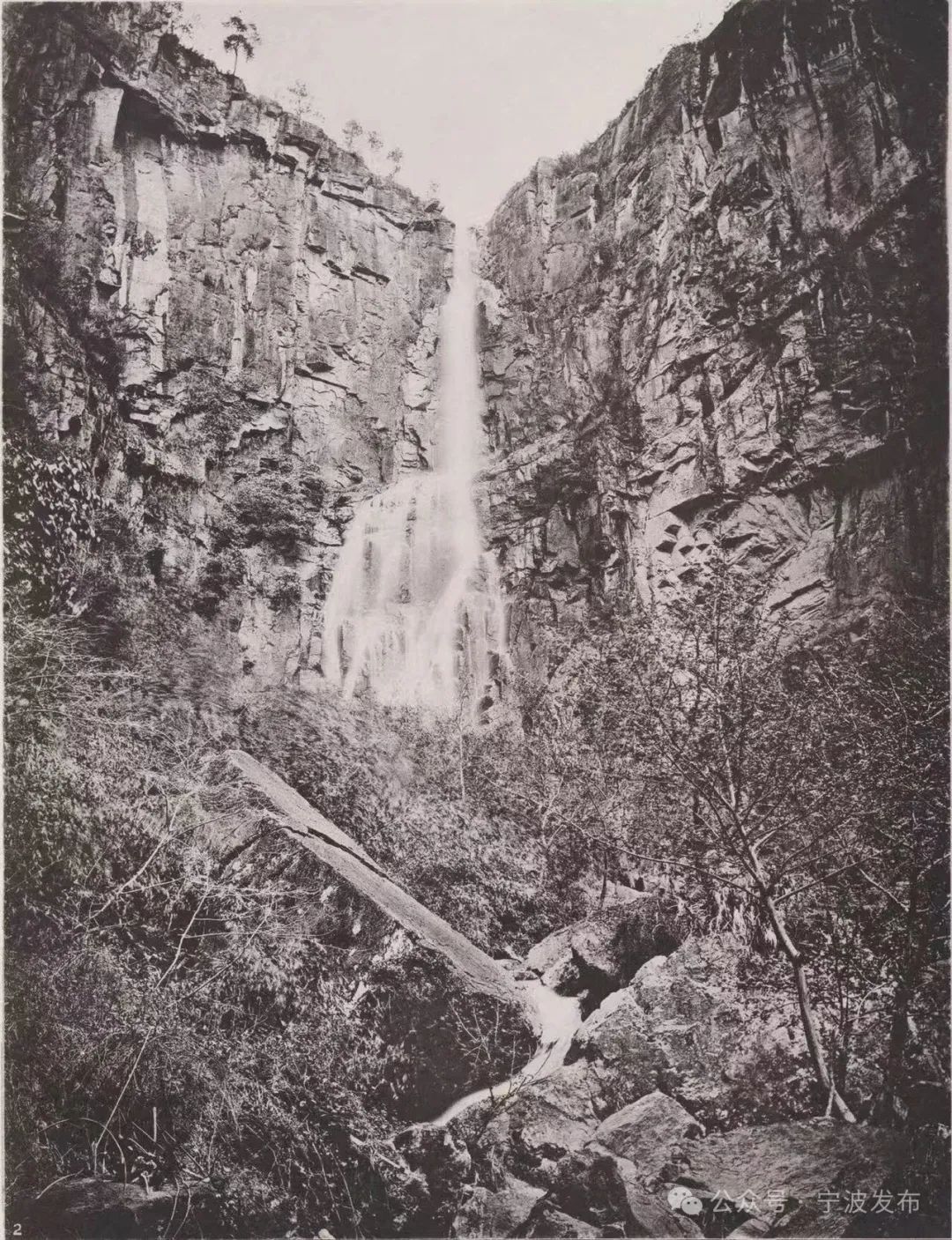
千丈岩,出自《杜德维相册》。
The old image of Qianzhangyan (Thousand-Fathom Rock) Waterfall.
李希霍芬一行走到瀑布下,而后沿着这随山势而下的瀑流走到亭下村,从那里坐竹筏到江口,继而换乘小船,开启前往天台的旅程。
Richthofen and his group walked to the bottom of the waterfall and preceded down to Tingxia Village. From there they took a bamboo raft to the mouth of the river and then changed to a small boat to start their journey to Tiantai County.
第二次,李希霍芬在宁波一共停留5天。和其他旅行日记不同的是,他始终对宁波石质有很细致的观察记录,帮助读者从一位外国地理学家的角度了解晚清宁波的风土人情。您也可以通过阅读中译本,来获取更多的信息。
For the second time, Richthofen stayed in Ningbo for a total of five days. Unlike other travel journals, he kept a very detailed record of his observations of Ningbo’s rock quality throughout, helping readers to understand more about the landscapes and customs of Ningbo during the late Qing Dynasty (1840-1912) from the perspective of a foreign geographer. If you are intrigued and wish to delve deeper into his narratives, the Chinese version of this book is also available.
来源:宁波发布



